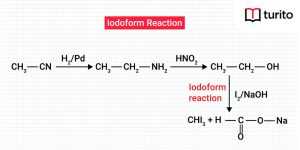We are always keen on knowing the origin and evolution of different species that happened and developed through time. When we think about our origin and ancestors’ livelihood, many questions come to mind. The archaeological department has answers to all our questions through the carbon dating process. This process helps experts to identify the time and space of our evolution and the origin of humanity.
Many dating methods are available to examine the age of the object sample. The main goal of this dating method is to determine the age of the subject. Let us see some techniques and how carbon dating works while examining the organic matter sample underground.
What is Carbon Dating?
The most popular and used process in finding the age of the sample object is Radiocarbon dating or simply Carbon dating. This method is used because it determines the near approximate date of the organic subject, which has carbon and hydrogen components in its structure.
This composition mixture is based on the law of exponential decay called radioactive isotopes, and the isotope present in this case of carbon and hydrogen is carbon-14. Radiocarbon dating, often known as carbon-14 dating, is considered the reliable method of finding the date by experts.
Carbon dating definition
The experts involved in archaeologists and other history enthusiasts find this radiocarbon tool inevitable in their journey while finding the organic material origin and its components. Carbon-14 dating is one of the best discoveries that reveal humanity’s present and past.
The main doubt is how carbon dating works as the process is used to identify the date of the sample that discharges carbon dioxide into the environment.
Later the chemist discovered the method that identifies the radioactivity of carbon-14, the most used isotope in carbon dating. Since its techniques are reliable to the environment, this method can find the organic matter present in the sample.
What are Carbon Dating Findings?
Mainly It works in finding dates of biological objects that have an organic structure in them. Carbon-14 dating has different types of samples available on this earth where organic matter is present like:
- Fossils
- Wood
- Stone
- Bones
The above mentioned elements should be 50,000 years old to examine their carbon matter while checking carbon 14 dating since elements like iron blade can’t be examined as it doesn’t contain any carbon or hydrogen components in their structure.
This method is difficult to perform since atomic blasts destructed the carbon-14 in the environment. The atmosphere is filled with many components after each detonation in the environment. Experts can’t date any material if carbon-14 is not present in it.
How does Carbon Dating Work?
The concept of half-life determines radiocarbon dating’s working method. The carbon dating definition explains that Half-life is the value of the radioactive material that gets destroyed into half of the atoms, which gives the initial value of the substance.
Since carbon-14 is not stable, its half-life value decreases, so when the experts examine the substance, it holds very minimal carbon value from its existence. The radioactive isotope is considered taken off after certain half-lives.
Living organisms’ existence is mainly due to carbon components in their bodies and tissues. Humans receive carbon from food intake, and other living things like plants take from the sunlight. So when they expire, they stop releasing carbon into the atmosphere, and gradually, the carbon-14 content in the structure decays. This is known as Radiocarbon dating.
Radiocarbon Reliability
Since carbon-14 in the atmosphere is unstable, this method needs some refined calculations to date the organic matter.
- Dendrochronology: This method is used to date the trees containing rings that are accumulated by uranium components present in them.
- Luminescence Dating: This method involves emitting blue and red rays to the subject that emits the signal, which tells the radiation amount it holds from the burial.
- Varve Sediments: This is used to identify the seasonal changes in the glacier beds that happen over time.
Accurate calculations prescribe the radiocarbon dates in all these above procedures. These methods largely help in determining the dates of organic matter. Archaeologists majorly rely on the carbon dating method because of its accuracy. This technique reveals the chemical components present in the sample. Many methods are into consideration for carbon dating as there are many difficulties while handling samples.
How Accurate is Carbon Dating?
Human errors are natural that happen in radiocarbon dating. But how accurate the carbon dating gives the best outcome of the search, let’s understand this by studying the following points:
- Combination of subject
- No clear understanding of the sample
- Wrong calculation of the date
- Contamination of objects by mishandling
Since the ground goes into numerous changes, organic matter contamination is usual. Lots of groundwater can cause contamination of samples. Not predicting the date of the sample accurately is also a major error in the archaeological field.
The radiocarbon dating limiting factor is cost since it involves the accuracy and efficiency it holds. The need and its uses for research must be considered while carbon dating since it is expensive. Many errors can occur if we examine anything we got from the last since it undergoes many changes below and above the soil. It is a tedious job for the experts while performing the technique.
Why is Carbon a Prime Finding Solution?
Carbon is the prime finding in carbon dating because the body of protein, fats, and carbohydrates is based on carbon. Since it takes thousands of years to decay, it is one of the important factors in finding its existence date. Carbon dating accuracy is the main reason for selecting it as a prime factor. Carbon dating accuracy helps to identify the sample age of various substances.
So as per carbon dating definition, all other radioactive elements decay. But carbon gets decayed slowly and at the rate of one minute for a millionth of carbon in our body.
Earth’s atmosphere undergoes many neutrons and protons changing, eventually converting into nitrogen that gets into plants, animals, and the human body as food. Once it stops releasing carbon dioxide into the atmosphere, it is subject to holding the carbon-14 in its composition, which helps find its last breath.
Modern Ways
Radiocarbon dating is insignificant for decade-old materials. But the amount of carbon-14 present in the material can predict the material age ranging from 1960-2020. This technique is used to find certain things in recent days like groundwater, paintings, etc.
Forged paintings can be identified by this method by determining the carbon-14 amount present in them even for a shorter period. So many techniques are implemented in these methods to find recent frauds and forged materials in town. Carbon dating accuracy helps majorly in these cases.
Since the atmospheric changes and carbon dioxide increase, the carbon-14 method cannot be used, which is pathetic for researchers in this field. Findings in the animal kingdom have no future because of this decline in the atmosphere.
So the researchers have to find or rely on different methods to find the date or history of animals or any kingdom. Climate and atmosphere change are the major concerns in carbon dating methods. As the sample already goes into many changes under the ground itself.
Conclusion
Due to environmental changes and destruction, the chemical components present in it are not stable, which leads to the path that we can’t find or give solutions to the new problems that arise. These findings help to give a solution to our recent sufferings. Carbon dating works only because the environmental factors support it.
We can study our history with facts with such methods. This is one of the greatest methods discovered by chemists who present our past lives before us. Their findings won’t stop since many chemical components are present in the environment.
Their journey in finding our past lives continues with modern tools and techniques as it evolves. It is the best technique for experts as it gives the expected results. As many say, it is one of the biggest findings in the archaeological field.
Frequently Asked Questions
1. Does carbon dating get affected?
Yes, some factors affect carbon dating, like contamination of samples, isotopic changes, soil reuse, and atmospheric changes happening in the upper layer. The main factor that affects carbon dating is mishandling the sample while performing a test on it.
2. What things can undergo carbon dating?
Any living thing that has organic components in its body can undergo the carbon dating method. Things like iron, pot, and metal do not hold any organic material, so they can’t be tested under carbon dating. If one has an organic substance in its components, it can be subject to the radiometric dating method.
3. How accurate is carbon dating?
Carbon dating accuracy is considered absolute because it is the first method used by archaeologists in finding the date and space of objects they retrieved from the earth. They believe it’s a reliable and absolute method of age-old testing matters. It is reliable because of its accuracy. Experts use the carbon dating method because they know how accurate it works.

Relevant Articles
Butanoic Acid – Structure, Properties, Uses
Butanoic Acid The carboxylic acid, butanoic acid, has the structural …
Butanoic Acid – Structure, Properties, Uses Read More »
Read More >>What is Iodoform? Characteristics and Uses
Iodoform The formula for Iodoform is CHI3. It is biotic …
What is Iodoform? Characteristics and Uses Read More »
Read More >>Lattice Energy – Explanation, Factors & Formulas
Lattice Energy Lattice energy evaluates the intensity of the ionic …
Lattice Energy – Explanation, Factors & Formulas Read More »
Read More >>Lead Acetate – Definition, Properties, Uses
Lead Acetate Have you ever licked lipstick when you sketch …
Lead Acetate – Definition, Properties, Uses Read More »
Read More >>




















Comments: